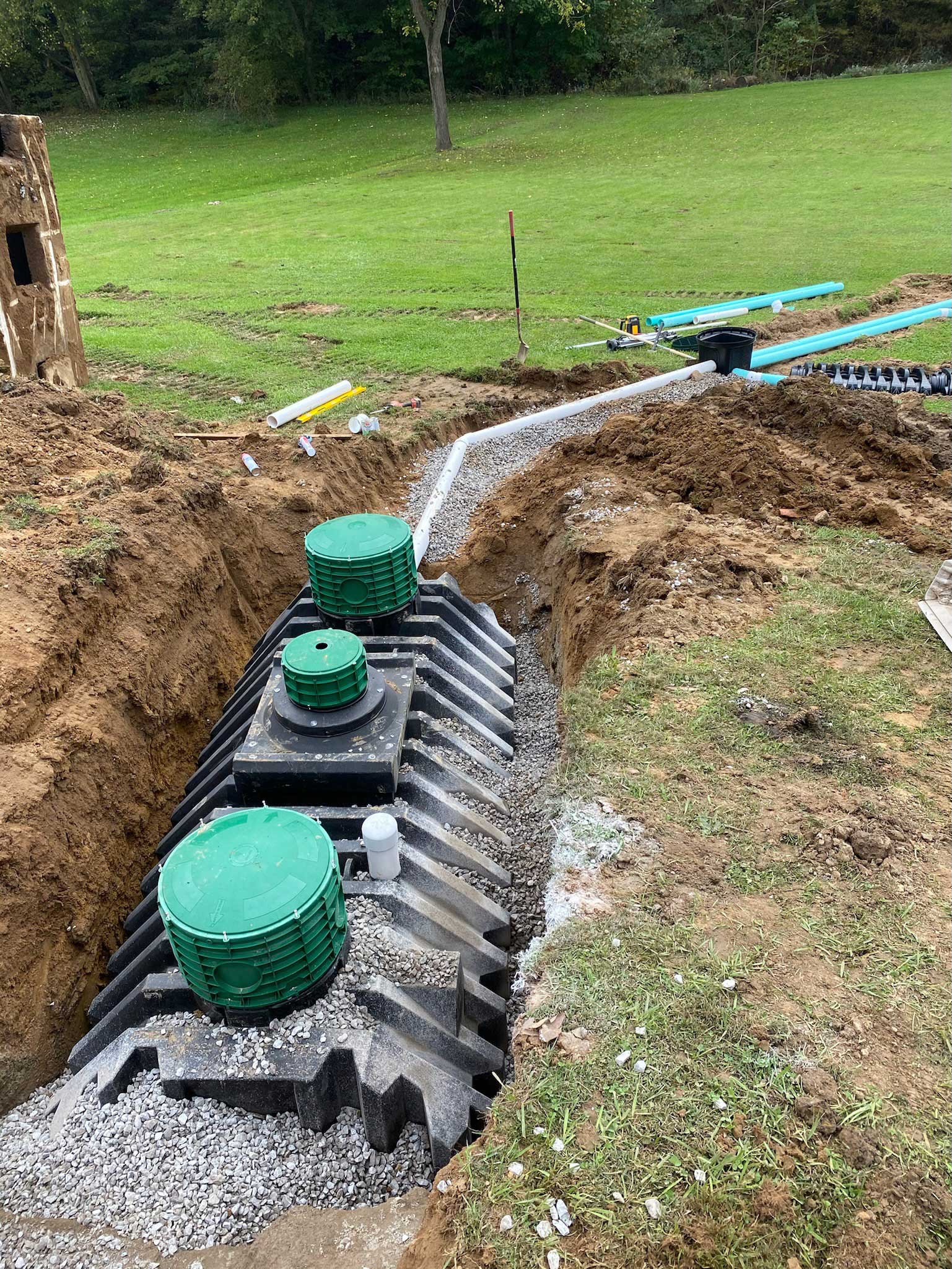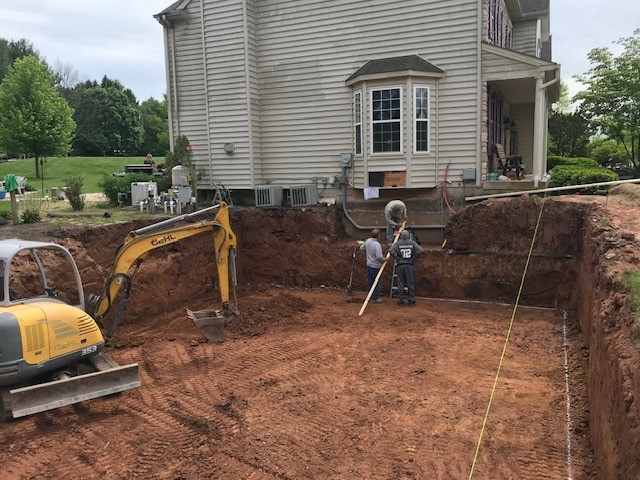Septic Ohio - Comprehensive Septic System Services in Ohio
Septic Ohio - Comprehensive Septic System Services in Ohio
Blog Article
Unveiling the Art of Excavation: Pro Tips for Safe and Effective Digging
As soil is turned and planet is moved, the intricacies of excavation expose themselves, requiring a keen understanding of tools, soil structure, safety methods, and environmental factors to consider. The knowledge required to navigate these components successfully can imply the distinction between an effective excavation task and a possible catastrophe.
Importance of Correct Tools
To ensure the safety and security and efficiency of any type of excavation job, making use of the appropriate equipment is extremely important. Excavation projects vary in scope and complexity, ranging from small domestic landscaping tasks to massive building and construction undertakings.
Excavators are essential items of equipment in any kind of excavating operation. These versatile makers come in various dimensions to suit different job demands. Tiny excavators are optimal for smaller tasks, while larger excavators deal with extra considerable jobs effectively. Backhoes are one more vital tools type, incorporating the features of a loader and an excavator in one equipment. They are important for tasks requiring convenience and maneuverability.
Apart from excavators, various other critical devices includes dump excavators, vehicles, and plates. Dump trucks are important for removing and delivering excavated materials, while trenchers are utilized for excavating deep and slim trenches. Bulldozers succeed in tasks that require pressing big quantities of dirt or particles. By buying the suitable tools, excavation jobs can be completed safely, on time, and with precision.
Comprehending Soil Make-up
A thorough understanding of soil composition is basic for implementing excavation tasks with precision and safety. Comprehending the different kinds of soil is crucial as it straight affects excavation methods, equipment option, and total task efficiency. Dirt structure commonly contains 4 primary components: sand, silt, clay, and natural matter. Each component has unique residential or commercial properties that influence just how dirt responds to excavation processes.
Sand particles are the biggest and provide excellent water drainage however offer little communication. Silt bits are smaller than sand but larger than clay, offering moderate drainage and communication. Clay fragments are the tiniest and give high communication yet inadequate water drainage. Organic issue, such as decaying plant product, influences soil fertility and security.
Prior to starting excavation, carrying out soil examinations to identify its structure and qualities is vital. This information aids in selecting the appropriate tools, applying precaution, and establishing excavation methods tailored to the specific soil problems - lancaster excavation. By understanding soil composition, excavation professionals can boost job outcomes while ensuring safety and security and adherence to finest methods
Precaution and Procedures
Comprehending soil composition is the keystone upon which precaution and methods for excavation jobs are constructed, ensuring the health of workers and the success of the endeavor. There are several vital steps that should be applied to alleviate dangers and stop mishaps. when it comes to safety and security during excavation.
Primarily, before any digging begins, a comprehensive assessment of the website should be conducted to identify any type of possible threats such as below ground energies, unstable dirt problems, or nearby structures that could position a risk. It is vital to have a competent person supervise hop over to here the excavation process to make sure that all safety and security protocols are adhered to purely.
In addition, all employees included in the excavation needs to be correctly educated in risk-free excavating methods and the proper operation of equipment. By adhering to these safety measures and methods, excavation projects can be completed effectively and without event.
Effective Excavation Preparation
When embarking on an excavation task, precise preparation is important to make certain efficiency, security, and effective outcomes. Reliable excavation planning includes several crucial actions that are vital for the smooth execution of the job.
Once the site assessment is full, the next action is to create a clear timeline and routine for the excavation tasks. This includes determining the series of tasks, devices needs, and manpower allocation. Correct scheduling assists avoid hold-ups and makes certain that the job remains on track.

Additionally, interaction amongst all group members is vital during the planning phase. Clear directives, regular updates, and effective coordination are important for a successful excavation project. By investing time and effort in meticulous view it now preparation, excavation groups can dramatically enhance performance, decrease threats, and attain effective results.

Handling Environmental Considerations
With raising focus on environmental sustainability in construction techniques, taking care of ecological factors to consider has come to be a crucial aspect of excavation jobs. Excavation activities have the prospective to impact the surrounding atmosphere through soil disintegration, sediment overflow, habitat interruption, and contamination of water resources. To reduce these threats, it is vital to implement best practices that prioritize environmental management.

In addition, proper waste management is vital to avoid dirt and water contamination. Implementing procedures for the disposal of dangerous materials, recycling of waste materials, and lessening using harmful chemicals can dramatically lower the environmental influence of excavation tasks. By incorporating these practices into excavation planning and execution, construction companies can guarantee that their jobs are not only risk-free and effective her latest blog yet additionally environmentally responsible.
Conclusion
To conclude, grasping the art of excavation needs a thorough understanding of correct tools, soil make-up, precaution, and efficient planning. By following these standards and taking into consideration ecological elements, excavations can be performed securely and efficiently. It is essential to focus on safety and security and efficiency in every digging task to guarantee successful end results.
As dirt is transformed and earth is relocated, the complexities of excavation disclose themselves, demanding an eager understanding of equipment, soil composition, security protocols, and environmental factors to consider.To guarantee the safety and security and efficiency of any type of excavation project, using the ideal devices is paramount.A thorough grasp of dirt make-up is basic for implementing excavation jobs with accuracy and safety and security. Recognizing the different kinds of dirt is important as it straight impacts excavation techniques, devices option, and overall project effectiveness. By recognizing soil composition, excavation experts can boost project results while making certain safety and adherence to best methods.
Report this page